One of the most anticipated clashes in this season’s UEFA Champions League group stage, five times European champions and Lionel Messi travelled to Wembley to play Mauricio Pochettino’s exciting young Tottenham Hotspur side. With Spurs losing their opening game away to Internazionale, this game at home to one of the tournament favourites dauntingly felt like a must-win for the North London club. The visitors have had a lot of success when travelling to the English capital and Messi always relishes an opportunity to prove his greatness when on British soil.
Missing four of his key players in Jan Vertonghen, Christian Eriksen, Dele Alli and Mousa Dembélé, Mauricio Pochettino faced a very un-ideal scenario when selecting his starting XI. The Argentine boss set his side up in a 4-2-3-1 formation with a double-pivot in midfield of Harry Winks and Victor Wanyama, both tasked with the role of protecting their back 4 and ensuring progression up the field when in possession. Both are very capable players but none are near the class of Mousa Dembélé when it comes to resisting opposition pressure in midfield.
Barcelona boss Ernesto Valverde in contrast could name a very familiar, start-studded line-up as the Blaugrana setup in a typical 4-3-3 shape. The midfield trio of Sergio Busquets, Arthur and Ivan Rakitic can make opposition players look like a dog chasing its tale when in possession and can pass the life out of any opposing team’s press.
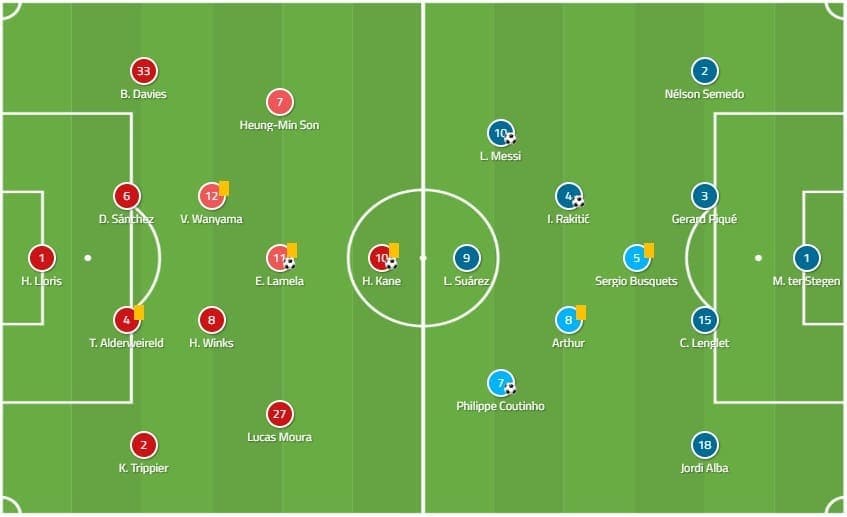
Asymmetric Barça gives Messi a free role
As the early passages of play unfolded, Barça’s assumed 4-3-3 shape was less evident than expected and instead a more asymmetric setup arose consistently throughout the game. While Coutinho held his left-wing position or pushed up in support of Suarez, Messi, in contrast, drifted into the middle of the pitch, looking for spaces in between the Spurs’ midfield and defence while Suarez kept that back-line honest. Both full-backs, Alba and Semedo pushed forward typically to provide their team width in attack. This system sometimes resembled a diamond-shaped midfield with Messi at its peak.
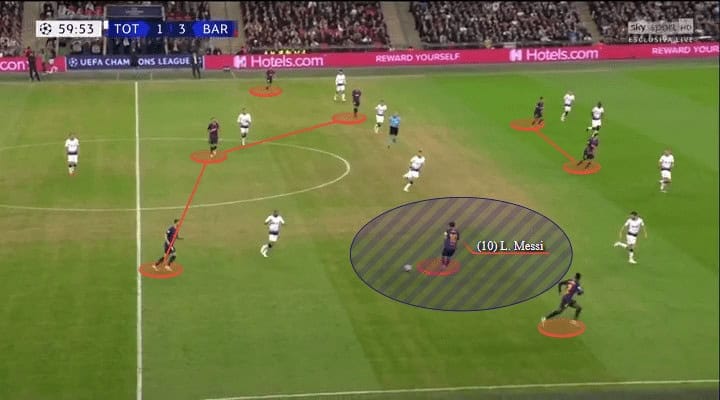
The man at the bottom of the diamond, Sergio Busquets, has long been pivotal to Barcelona’s style of play. Yet he seems somehow still underrated by fans and some fellow professionals alike as their focus is fixed on Messi, Suarez and their top-class supporting cast. Spurs pressed the Blaugrana high into their own third of the pitch within the first minute but when doing so they failed to pay sufficient attention to Busquets. The deep-lying playmaker has long been one of the World’s best in that role and transfers the ball from his defenders to his forwards with expert precision and consistency.
In only the second minute of play, Busquets found a pocket of space to receive the ball from his centre-back teammate Lenglet before playing it to Messi, the Argentine forward’s first mark of brilliance in the game followed and Coutinho’s ensuing goal put the visitors into an early lead.
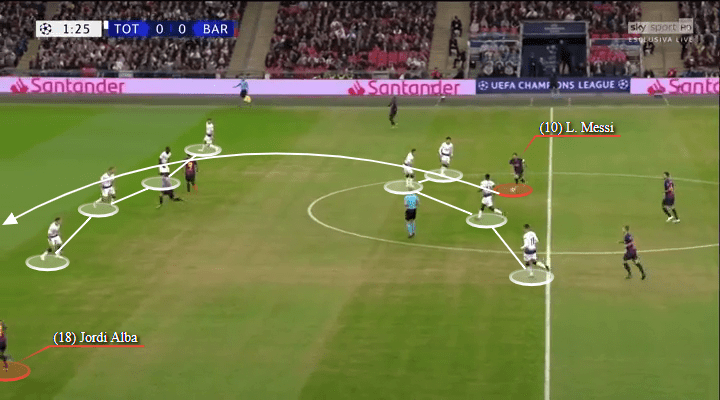
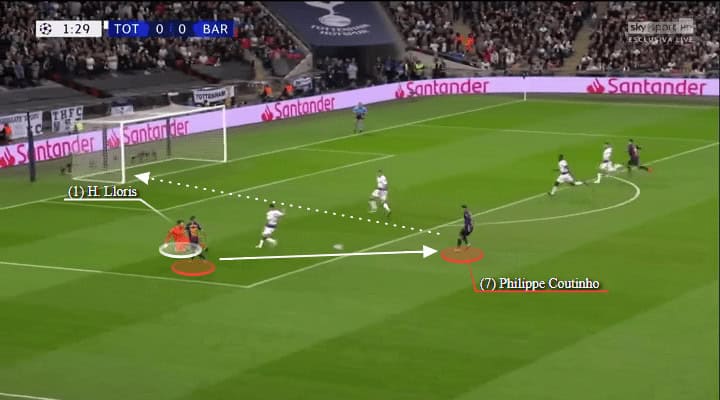
Pochettino’s Plan
High-pressing in an attempt to choke the life out their opponent’s plans to build from deep is a common tactic deployed by Mauricio Pochettino. Coming into this game as underdogs and without many star players, Tottenham perhaps thought an aggressive approach would surprise Ernesto Valverde and his players. But the game’s early opening goal put a quick end to Spurs’ high press for the next 10 minutes as Pochettino’s side reverted to a 4-2-3-1 mid-block. This gave Valverde’s men time to dominate proceedings and keep Spurs on the back foot.
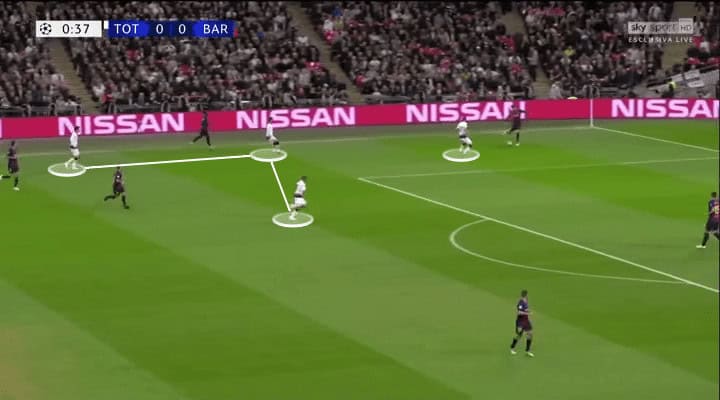
Despite having less of the ball against such daunting and illustrious opponents, Spurs, to their credit, didn’t look to get the ball as far away from their goal each time they recovered possession. Pochettino’s men looked to pass their way past the Barcelona press as Harry Winks and Victor Wanyama formed a double-pivot at the base of the Tottenham midfield and looked to link the back-four to the attacking midfield trio of Lamela, Lucas Moura and Son.
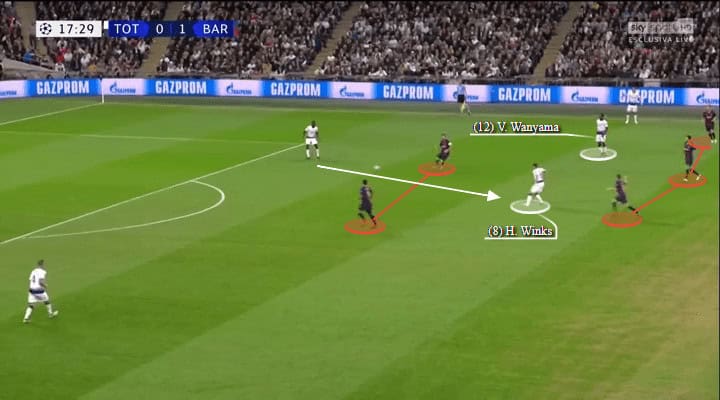
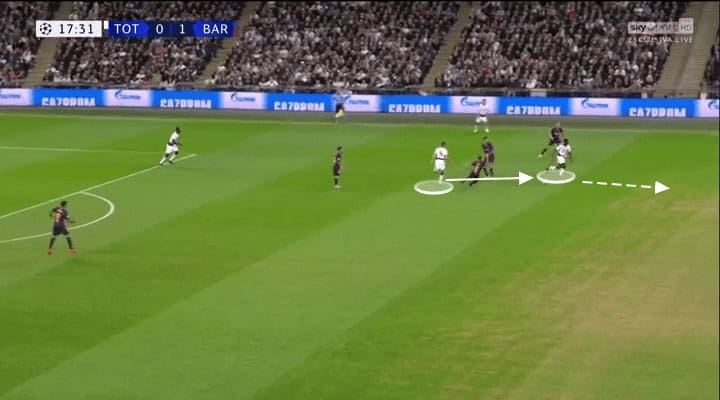
But this tactic didn’t prosper much in the opening 20 minutes of play as Barcelona’s ball-oriented press and superior ability to keep possession once it was won proved too much for Spurs to overcome. Mousa Dembélé was sorely missed in the role that Harry Winks admirably fulfilled, the Belgian is among the best in the business at playing around an opposing team’s aggressive pressure.
In response to the failing approach, Pochettino switched his personnel around a bit. Erik Lamela moved to the left-wing, Son Heung-Min moved into the striker’s role while Harry Kane dropped a little deeper as the number 10 in what was still a 4-2-3-1. Son gave the Barcelona a different challenge as the South Korean is a little pacier than Harry Kane. This made the Barcelona back-four drop a little deeper at times and created more space for Kane, Lucas and Lamela to exploit.
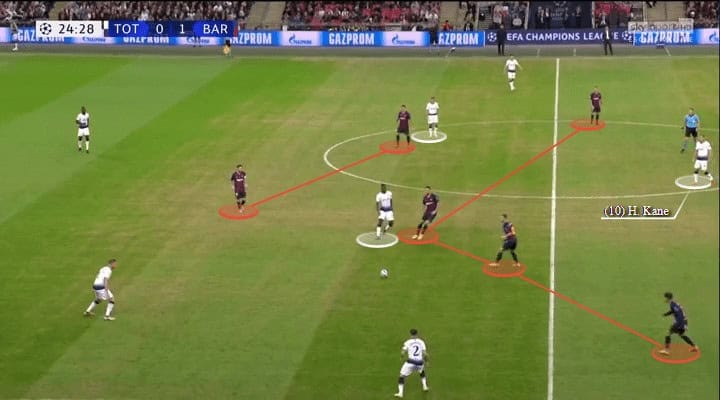
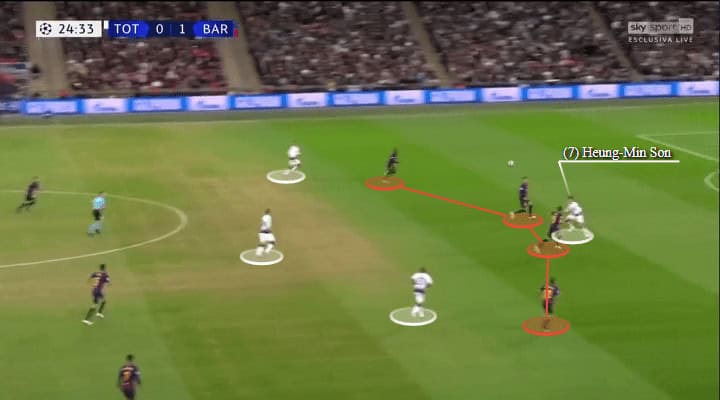
Tottenham’s goals both came more from the individual action then tactical success, Barcelona looked quite comfortable with every approach Pochettino’s men had tried. But toward the end of the game, Barcelona seemed content with sitting deeper and letting Spurs have more of the ball. Only a goal ahead at 3-2, this might seem like a dangerous tactic from the Blaugrana but perhaps it was another change in tactics from Pochettino that finally but Valverde’s men on the back foot.
Fernando Llorente had replaced Erik Lamela which meant Tottenham had two number 9’s up top in a 4-4-2. While Llorente and Kane stayed high and central, wingers Lucas Moura and Moussa Sissoko tucked infield to find gaps in the Barça block. Eric Dier and Harry Winks looked to pull the strings from deep while the full-backs, Trippier and Davies, pushed high and wide. A bit similar to Barcelona’s shape in the first 60 minutes of the game.
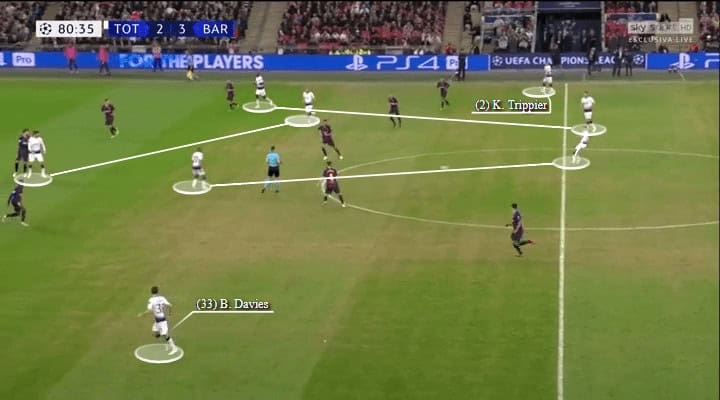
Spurs made some half chances in the late periods of the match but the absence of key attacking midfielders Christian Eriksen and Dele Alli could be sorely felt, particularly by Mauricio Pochettino you feel. The return of their absent stars for the return fixture in a few weeks’ time will hopefully lift a Spurs side who will very likely need a result in Camp Nou to retain any hope of progressing past the group stages.
Man, Myth, Messi
Anyone new to the game of football may watch the current incarnation of Lionel Messi and consider him a bit passive without possession and a defensive liability. Messi certainly does have something of a free role in this team and his involvement in pressing the opposition seems down to his discretion rather than part of a holistic pattern. When his team are in possession, Messi’s designated role at right-wing is often vacated by the Argentine as he roams in search of the best position to hurt the opposing team.
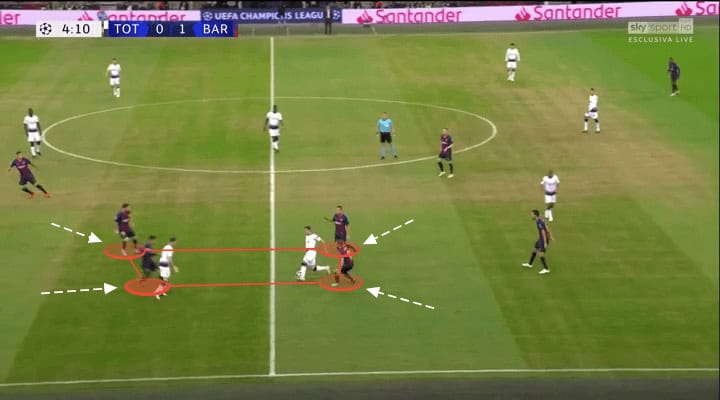
But Barcelona are willing to neglect certain parts of the pitch if they can get Messi into space, the La Masia graduate is that deadly in possession that all they need to do is get him the ball in a semi-dangerous position. The first three Barcelona goals in this match were sparked by Messi after he had drifted into space either centrally or wide-left before playing a pass through or around the Spurs’ back-four.

Conclusion
What may have otherwise been a very tight and intriguing tactical battle was overshadowed by the brilliance of Lionel Messi. The superlatives have been utterly exhausted for the Argentine forward and he only continues to re-invent himself and brush aside any opposing side’s fresh plans to thwart him. Messi’s mere presence is enough to put most opponents a goal or two down mentally before the game even begins and the diminutive La Masia graduate scoring in a major game is one of football’s most guaranteed sights on a Champions League match-day.
Spurs in comparison don’t have a player of Messi’s calibre, as good as Kane may be, and while the game plan of Pochettino’s seemed well executed it was always going to be done in vain when Messi plays with such dominance. Take Lionel Messi away and we may have witnessed a far more even contest and a battle of two brilliant tacticians but Messi’s brilliance transpires tactical setups and game dynamics to the point where the opposing team’s defenders look like they’re dazzled by him as much as the crowd are. This game is one that future generations of Tottenham fans will be shown when they ask who Lionel Messi was.

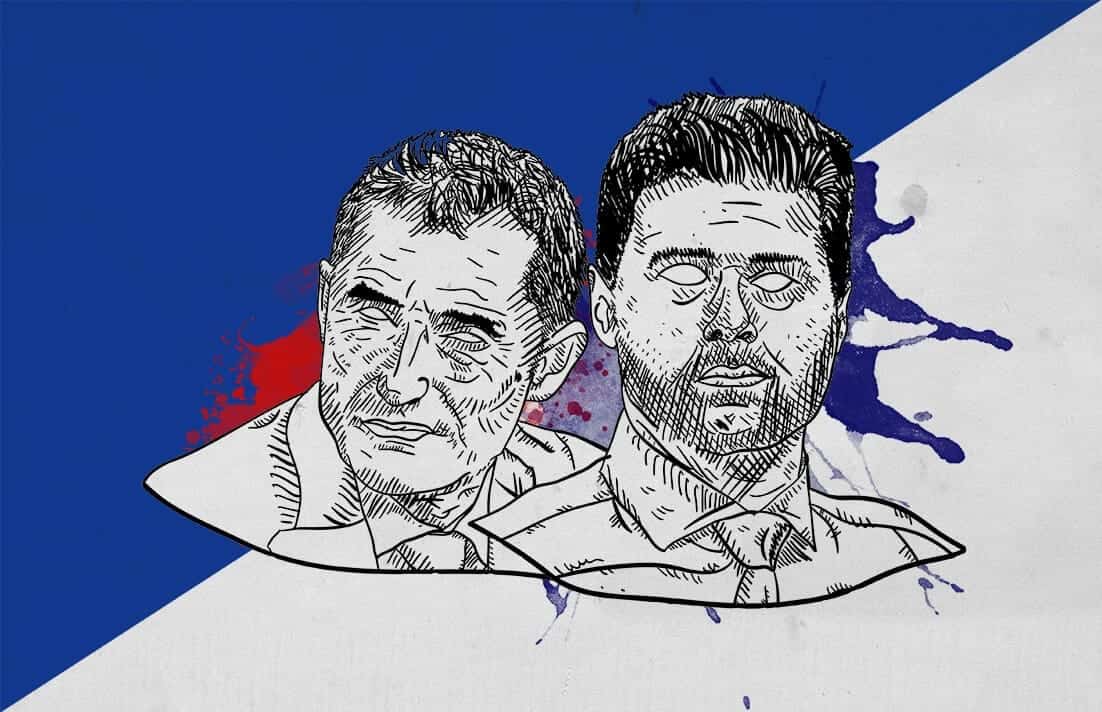


Comments